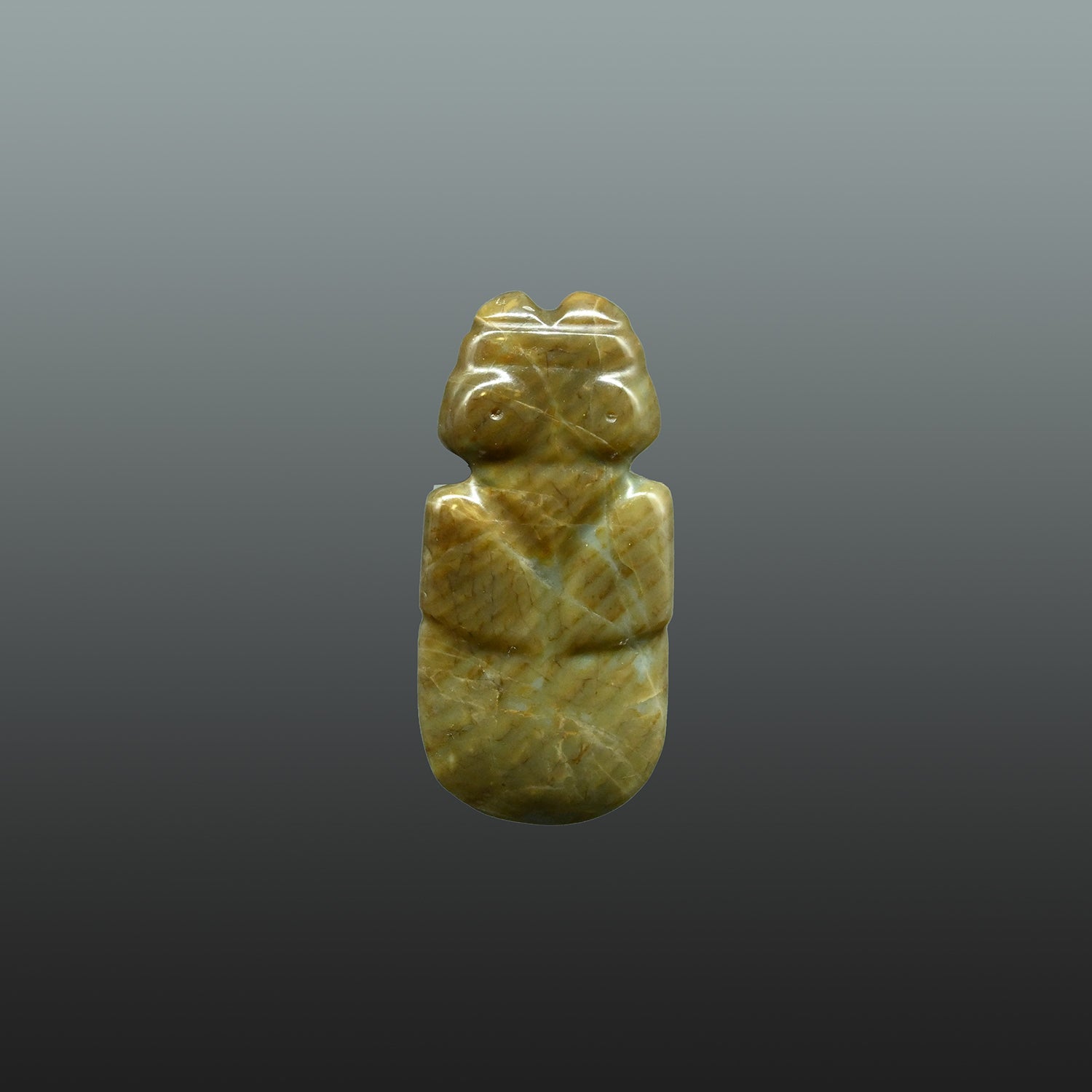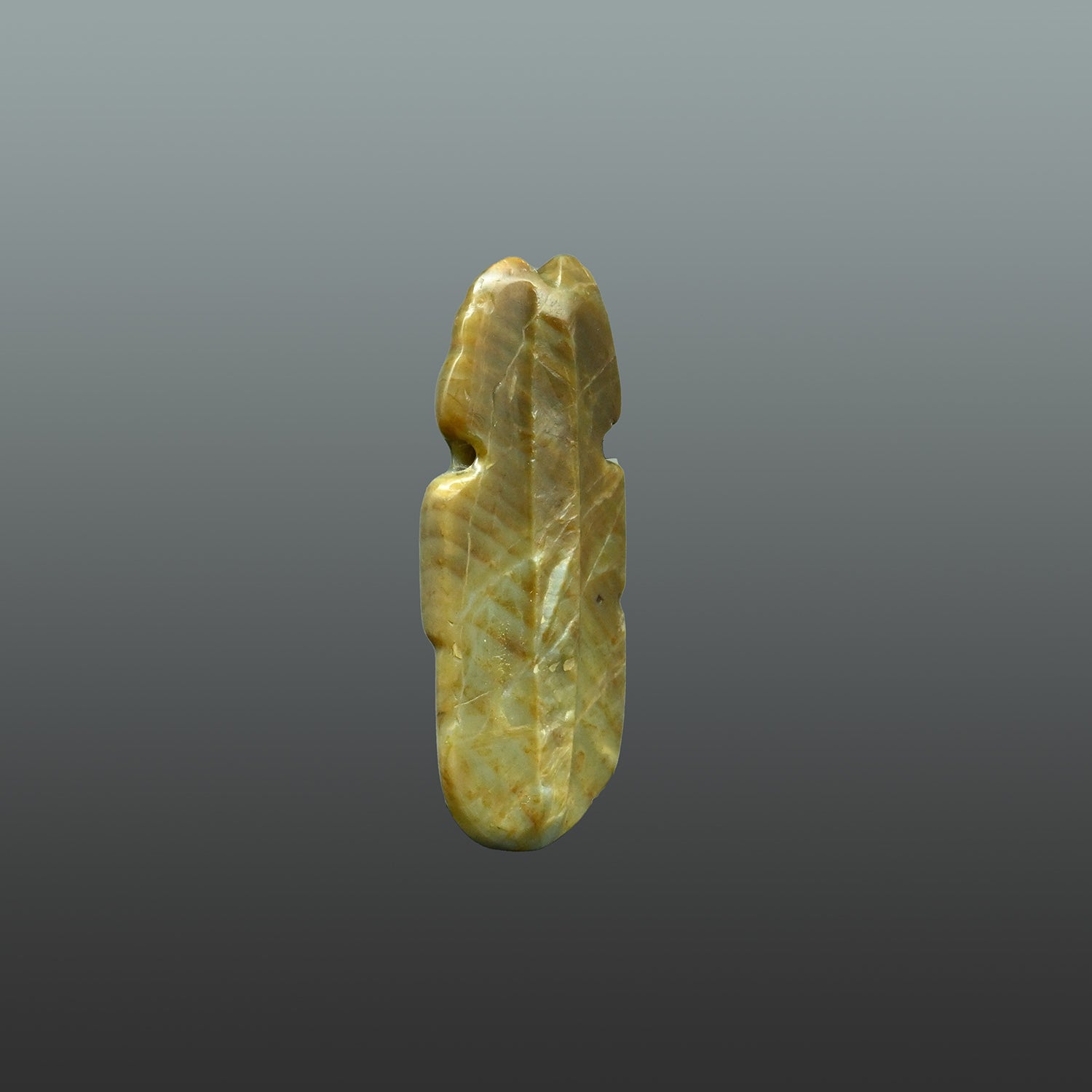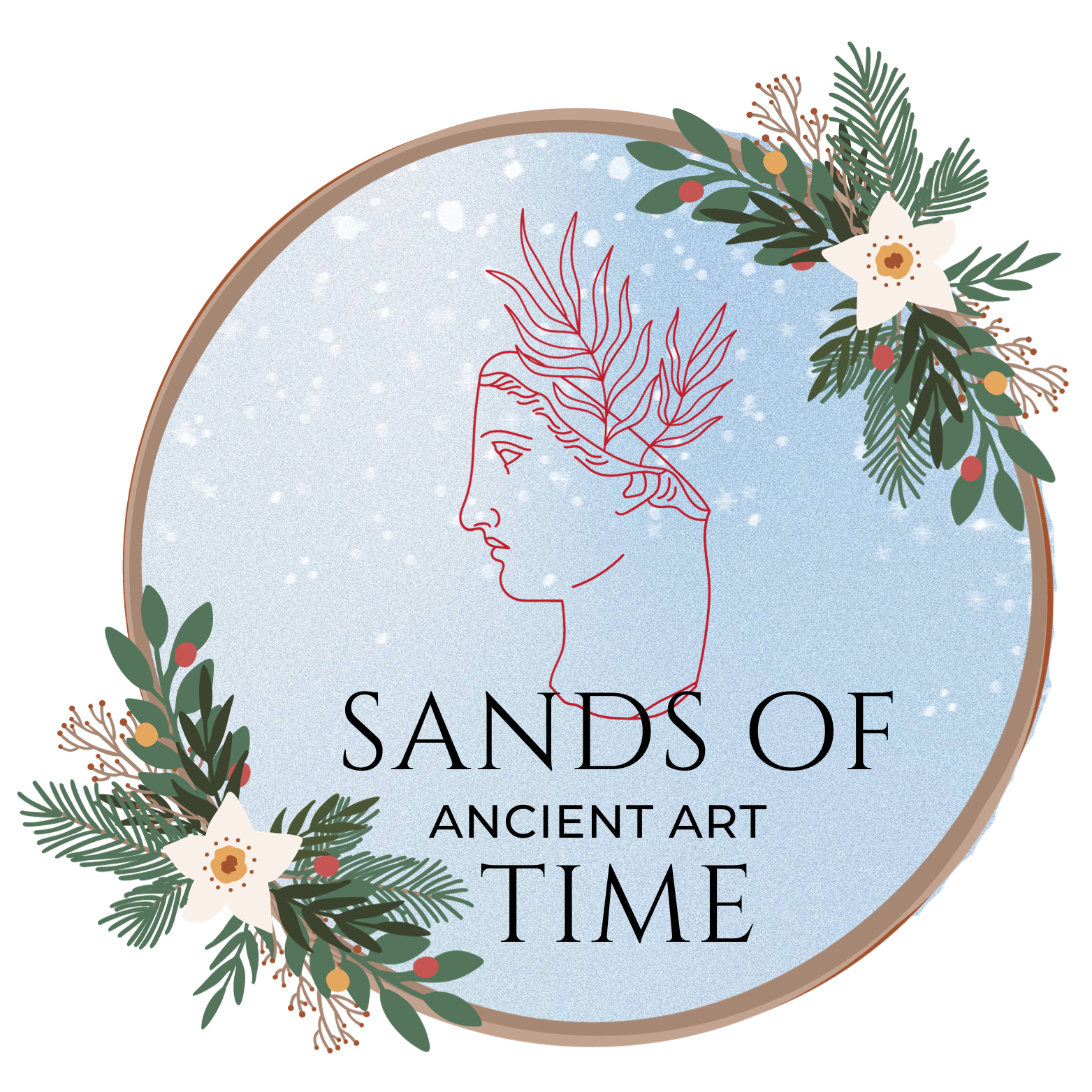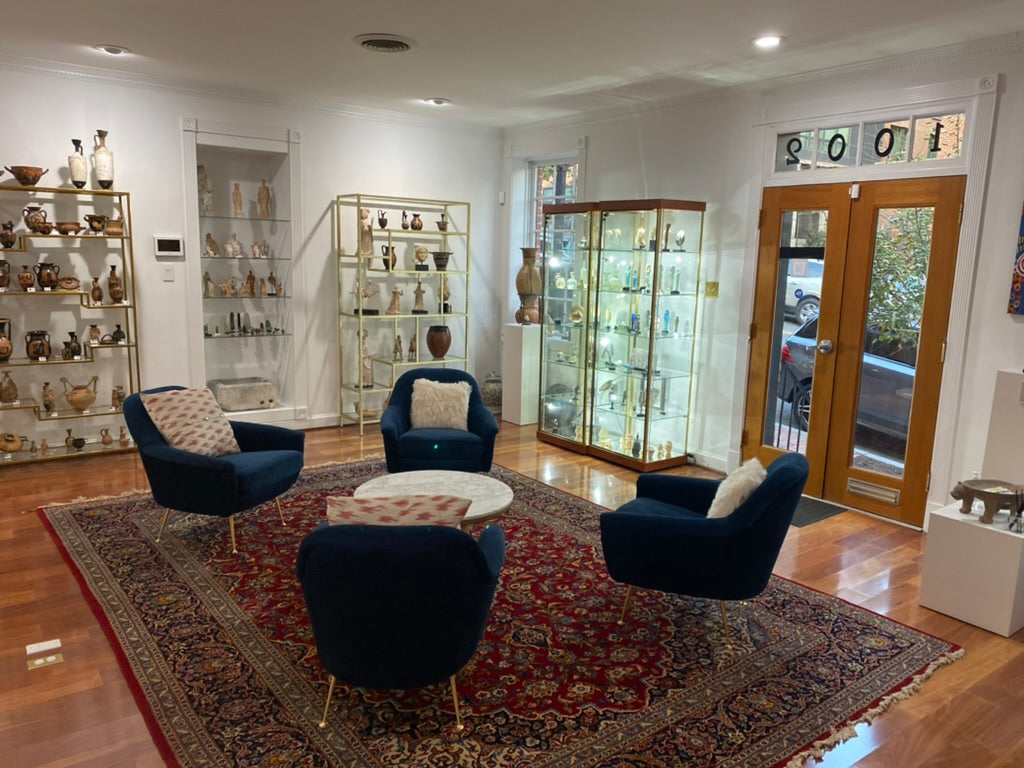


A Costa Rican Greenstone Axe God Pendant, Early Classic Period, ca. 100 - 600 CE
This object qualifies for free USA shipping and a flat rate fee of $75 if shipping internationally.
Carved from mottled greenstone, the highly polished pendant is depicted with the head of a horned owl featuring bulging eyes with tiny incised pupils, a ridged brow, tufted feathers, and downturned triangular beak, the wings folded in front, a hole drilled through the neck for suspension. The back features a central ridge or septum, indicating this celt was split lengthwise into two half celts.
Costa Rican jade pendants are often in the form of "axe-gods," in which an effigy carving of an animal, person, or a combination thereof, surmounts a smooth blade in the form of a polished axe or celt and is drilled transversely for suspension. These celts were not functional weapons, but rather badges of office, status, or clan-type affiliation, and were worn on the person as pendants. Purposefully shaped like functional axes or celts, these highly-prized pendants gave recognition to the importance of the working tools used in agriculture and forestry.
Axe gods were often depicted with the upper bodies of animals such as jaguars, bats, and birds, as seen here; alternatively, they were depicted as humans wearing animal masks, or shamans in their animal alter egos, which may be the case here. Owls, like jaguars, were important to shamans -- they symbolized many of the traits shamans possessed. Owls are creatures of the night, traveling and hunting in the dark. Shamans were also believed to "travel" to the Otherworld and fight spiritual battles during the night. Additionally, owls were conduits to the Otherworld and were seen as helpers who would assist shamans to connect with the spirits and to utilize their power.
Ref: Stone-Miller, Rebecca, Seeing with New Eyes: Highlights from the Michael C. Carlos Museum Collection of Art of the Ancient Americas, Atlanta: Emory University (2002), pp. 150 - 154.
Dimensions: Height: 2 1/2 inches (6.4 cm)
Condition: A few small chips to the back edges, but otherwise intact and in excellent condition.
Provenance: Mirtha Virginia de Perea (1929 - 2019) private collection of Costa Rican art. Mrs. de Perea spent her entire 48-year career with the Embassy of Costa Rica in Washington, DC, achieving the rank of Cultural Minister-Counselor and Consul after having started as a secretary. She was a devoted patron of the arts, promoting numerous local artists and sponsoring many cultural events throughout her career. She also amassed an impressive collection of Latin American art. After retiring in 1999, she became a US citizen and continued her support of the arts through her membership in the Women’s Committee of the Washington National Opera and other local groups.
QUESTIONS? Just click the Contact Us tab on your right.
We ship Tuesday to Friday with FedEx and usually same day if your order is received before 2pm. Within the continental USA, packing, shipping and insurance is free. Depending on size and destination, delivery times range from one to five business days.
For overseas shipments we charge a small flat rate which includes packing, preparation of all customs paperwork, insurance and carrier fees in compliance with all USA and International customs requirements.
Overseas shipments are sent via FedEx, DHL, or UPS International Priority, so contact us if you have a shipping preference. International customers are responsible for all duties and taxes.
Sands of Time provides a lifetime, unconditional guarantee of authenticity and provenance. Every object you purchase from us is accompanied by a Certificate of Authenticity, stating culture, provenance, and age.
Furthermore, we conduct due diligence to ensure the item, to the best of our knowledge, has not been illegally obtained from an excavation, architectural monument, public institution, or private property. Wherever possible, reference is made to existing collections or publications.Wherever possible, reference is made to existing collections or publications.
Choose options






